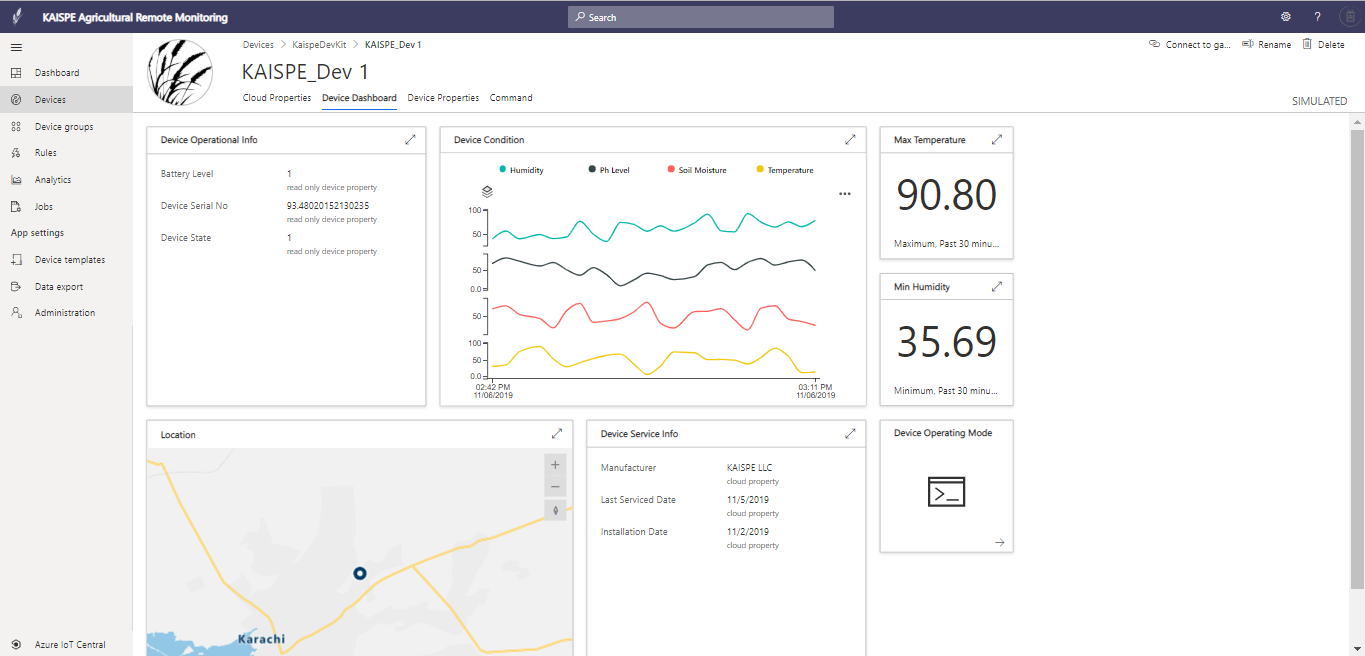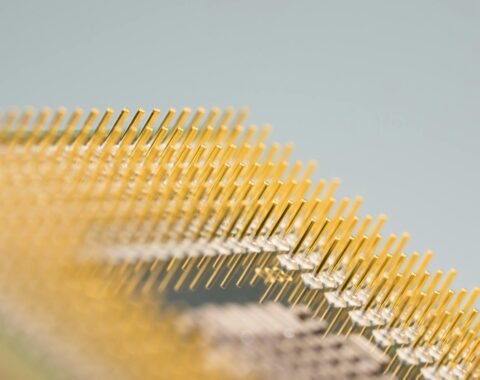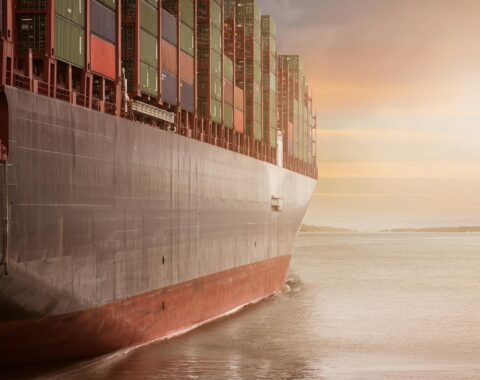As we all know Microsoft new release about Microsoft Azure IoT Central Updates where solution builders can easily now move their application from proof of concept to production level. So, today we will be making an application using updated features and will learn to know in more detail.
Back in July 2019 we published KAISPE Agricultural Remote Monitoring solution which provides key telemetry information to farming customers about soil moisture, air temperature, humidity and weather forecast using Microsoft Azure IoT Central to help mitigate the water irrigation problems. Now, Here again we will upgrade our solution to get it aligned with Azure IoT Central recent updates and hence make it more secure, reliable and scalable.
So, let’s build an IoT device template where we will define the characteristics and behavior of a device that connects to an Azure IoT Central Application.
Note: As an integrator, you can quickly get started with IoT Plug and Play certified devices listed in the Azure IoT Device Catalog. IoT Central is integrated with the device catalog, allowing you to create device templates from any of these devices in IoT Central via IoT Plug and Play.
For creating a device template:
- Go to Device Templates
- Select + New and then select Custom and enter a desire name for the template.

Now as we have created a device template we need to create an interface and you also choose Edit Identity to change your interface name. Remember for device capability we need an interface where we can reuse the collection of capabilities.
To create an interface you can have two options, whether you make your own interface from the scratch or import an existing interface from your system. Here are the step for creating an interface:
- Go to device capability model to choose + Add interface.
- Choose standard interfaces of your application need like we add three interfaces such as KSP Device Info, KSP Device Command and KSP Device properties.

Note: After we created custom interfaces we add device’s capabilities to define device telemetry, properties and commands.
Here we have the define capabilities added in our custom interfaces:
KSP Device Info

KSP Device Command

KSP Device properties

Now comes the next part Cloud Properties where we stored information about our IoT devices in the page.

So, in the next step we have created views to visualize our device information in which we created Device Dashboard, Device Properties and Cloud Properties. You can also generate a default view given by device template.
Note: In the view section you can add Forms which enables operator to manage device views, settings and properties.
After completed all the steps above, the device template must be Publish before connecting to the device that implements the device capability model, but remember only limited changes to the device’s capability model can be made after the device template is published.
Now we can navigate to the Devices page. You can add either real or simulated device and make rules according to your need. In our scenario we will be adding a simulated device to demonstrate application working (You can add our real Azure Certified Device to fulfill your need).
Rules for our solution

Now we can have the device information visualized in different views such as Device Dashboard, Device Properties and Cloud Properties.
Here we have the generated views for our IoT Device:
Device Dashboard

Device properties

Cloud Properties

In last let’s have a little overview about Azure IoT Edge, in short Azure IoT Edge moves cloud analytics and custom business logic to devices so your organization can focus on business insight rather than data management. For example, you don’t want everything to be on the cloud, you can easily make your device that intelligent so just by using SDKs, you can integrate Azure Services like Azure Machine Learning, Stream Analytics or you can use your own code in your IoT Edge Device. Video analytics is one of the example you can do it on your IoT Edge Device.
Here we have a Main Dashboard for KAISPE Agricultural Remote Monitoring application:

I hope you liked this blog post. Keep in touch with us at [email protected]




